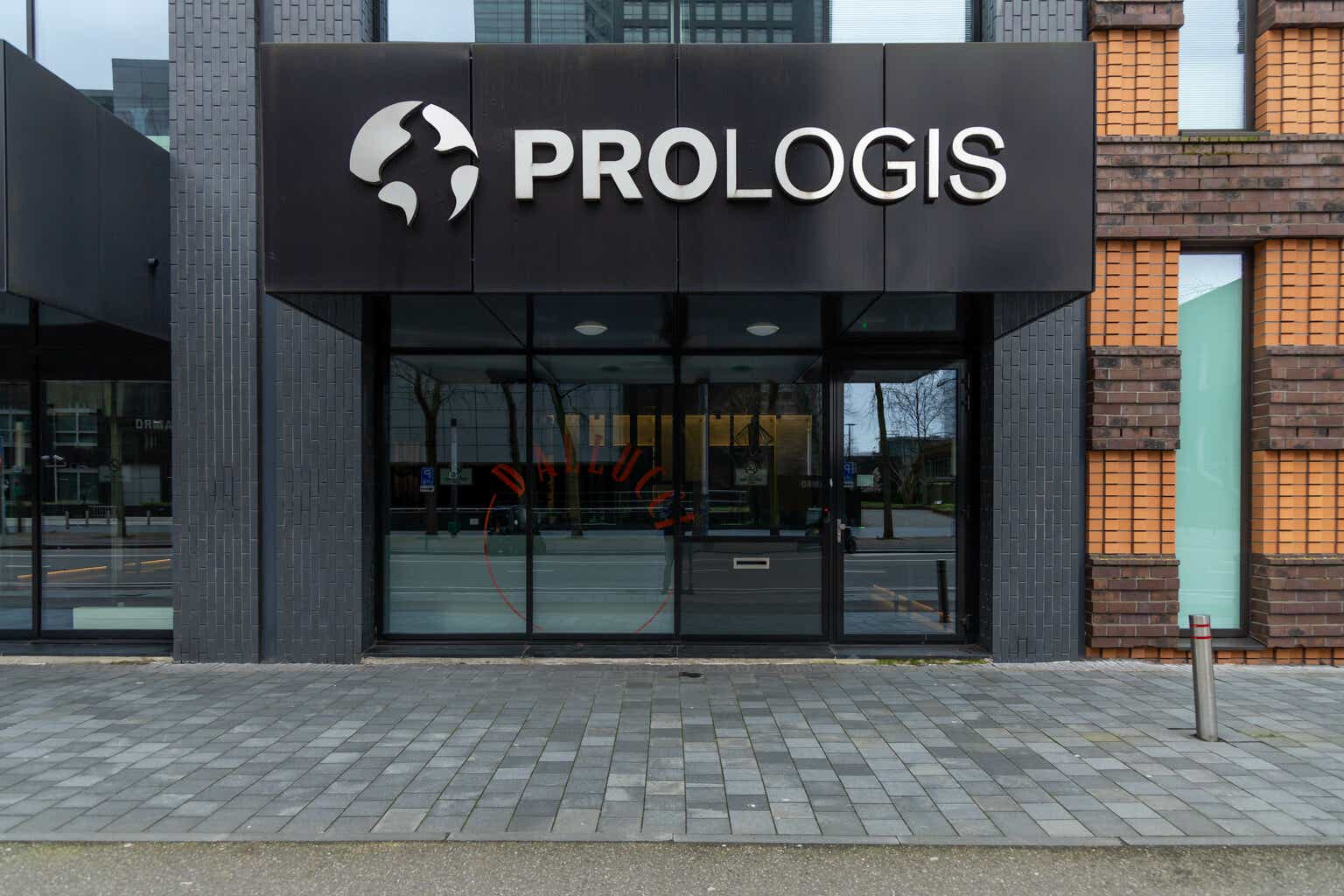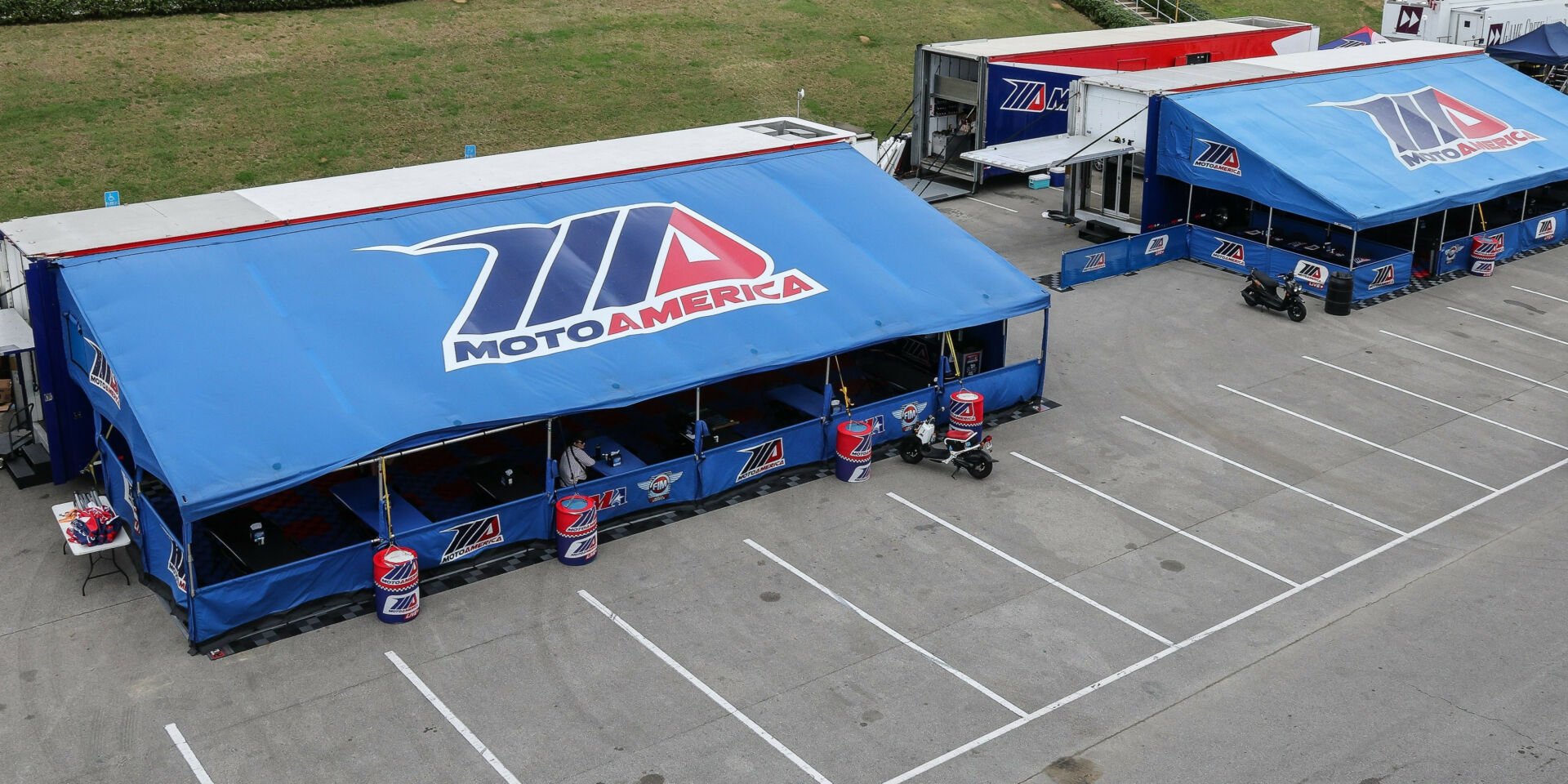What is MCP Server? Clearly Explained!
Below is a detailed, in-depth exploration of the concept of an “MCP server.” The term “MCP server” can refer to a wide variety of systems using an underlying “Modular Communication Protocol,” “Message Control Platform,” or any number of other expansions for the MCP acronym. In this article, we will treat “MCP server” generically as a modular, high-performance, and adaptable server platform framework that is designed to facilitate communication, data processing, and service orchestration across diverse computing environments. Whether you have encountered MCP server in industrial control systems, large-scale data processing flows, or service-oriented architectures, the fundamentals below will help clarify what an MCP server is, how it works, and why it might be useful for your organization. This article aims to provide a comprehensive discussion—spanning history, architecture, administration, security, and more. It is broken down into multiple sections to help you gain a thorough and technical understanding, from first principles to real-world application. The content is written in Markdown for easy reading and future reference. Enjoy! By the way, if you want to explore the top MCP Servers, check out Himcp.ai where you can find over 1000+ MCP servers! Introduction to MCP Server MCP server stands for “Modular Communication Protocol server” (or another variant of the MCP acronym, depending on the technology stack). At its core, an MCP server is designed to be a robust, scalable, and secure platform to facilitate inter-application communication, data processing, and real-time service orchestration. By adopting a modular architecture, MCP servers can host and manage various specialized modules or services (often called “microservices” or “plugins”) that process data, communicate with external systems, or perform domain-specific operations. Key Characteristics of an MCP Server Modularity: MCP servers are composed of separate functional modules, each responsible for distinct tasks or services. Communication Efficiency: Often designed for high throughput and low latency, MCP servers may implement custom protocols optimized for speed and security. Flexible Deployment: MCP server technologies frequently support containerization or virtualization, enabling seamless deployment across cloud, on-premises, or hybrid setups. Extensibility: An MCP server may come with a plugin system or API that allows easy addition of new functionalities. The nature of MCP servers makes them a suitable backbone for scalable architectures, large data flows, or enterprise-level integrations. Now, let’s delve into the historical perspectives. Historical Evolution of MCP Server Understanding the historical context of MCP server technologies helps clarify why they exist and why they have certain architectural choices. Early computing systems often used monolithic designs with tightly coupled components. However, as systems grew in complexity, the industry moved toward service-oriented architectures (SOA) and microservices. From Monolithic to Modular Monolithic Era: Historically, servers relied on centralized, all-in-one executables. Any change in one module could affect the entire application, making updates risky and time-consuming. Event-Driven Paradigm: In the 1990s and early 2000s, message queues and event-driven systems emerged. This laid the groundwork for technologies where entire subsystems could communicate asynchronously. Service Orientation: The rise of SOA in the 2000s decoupled services, enabling them to evolve independently. Microservices and Beyond: Eventually, containerization and microservices became widespread. The concept of an MCP server draws from these ideas: it is an underlying platform that manages multiple “micro-components,” each fulfilling a particular role. MCP servers represent a pinnacle of this evolution: building on the foundations of modular design, parallel processing, and robust, event-driven communication. Core Philosophy behind MCP Server To fully grasp an MCP server’s workings, it is important to understand the overarching philosophy that drives its design: Loose Coupling: Each service or module running on an MCP server can communicate via well-defined interfaces (or message protocols) without overlapping code dependencies. High Availability: Because subsystems are modular, failures can be isolated to specific modules, improving fault-tolerance. Scalability: Modular design supports horizontal and vertical scaling more easily. Security by Design: By containing modules within secure boundaries and message layers, the MCP server can be designed to reduce the blast radius of a potential attack. This core philosophy makes MCP servers adaptable for various industries, from finance to manufacturing, from data analytics to streaming media. Architecture of MCP Server Overview An MCP server

Below is a detailed, in-depth exploration of the concept of an “MCP server.” The term “MCP server” can refer to a wide variety of systems using an underlying “Modular Communication Protocol,” “Message Control Platform,” or any number of other expansions for the MCP acronym. In this article, we will treat “MCP server” generically as a modular, high-performance, and adaptable server platform framework that is designed to facilitate communication, data processing, and service orchestration across diverse computing environments. Whether you have encountered MCP server in industrial control systems, large-scale data processing flows, or service-oriented architectures, the fundamentals below will help clarify what an MCP server is, how it works, and why it might be useful for your organization.
This article aims to provide a comprehensive discussion—spanning history, architecture, administration, security, and more. It is broken down into multiple sections to help you gain a thorough and technical understanding, from first principles to real-world application. The content is written in Markdown for easy reading and future reference. Enjoy!
By the way, if you want to explore the top MCP Servers, check out Himcp.ai where you can find over 1000+ MCP servers!
Introduction to MCP Server
MCP server stands for “Modular Communication Protocol server” (or another variant of the MCP acronym, depending on the technology stack). At its core, an MCP server is designed to be a robust, scalable, and secure platform to facilitate inter-application communication, data processing, and real-time service orchestration. By adopting a modular architecture, MCP servers can host and manage various specialized modules or services (often called “microservices” or “plugins”) that process data, communicate with external systems, or perform domain-specific operations.
Key Characteristics of an MCP Server
- Modularity: MCP servers are composed of separate functional modules, each responsible for distinct tasks or services.
- Communication Efficiency: Often designed for high throughput and low latency, MCP servers may implement custom protocols optimized for speed and security.
- Flexible Deployment: MCP server technologies frequently support containerization or virtualization, enabling seamless deployment across cloud, on-premises, or hybrid setups.
- Extensibility: An MCP server may come with a plugin system or API that allows easy addition of new functionalities.
The nature of MCP servers makes them a suitable backbone for scalable architectures, large data flows, or enterprise-level integrations. Now, let’s delve into the historical perspectives.
Historical Evolution of MCP Server
Understanding the historical context of MCP server technologies helps clarify why they exist and why they have certain architectural choices. Early computing systems often used monolithic designs with tightly coupled components. However, as systems grew in complexity, the industry moved toward service-oriented architectures (SOA) and microservices.
From Monolithic to Modular
- Monolithic Era: Historically, servers relied on centralized, all-in-one executables. Any change in one module could affect the entire application, making updates risky and time-consuming.
- Event-Driven Paradigm: In the 1990s and early 2000s, message queues and event-driven systems emerged. This laid the groundwork for technologies where entire subsystems could communicate asynchronously.
- Service Orientation: The rise of SOA in the 2000s decoupled services, enabling them to evolve independently.
- Microservices and Beyond: Eventually, containerization and microservices became widespread. The concept of an MCP server draws from these ideas: it is an underlying platform that manages multiple “micro-components,” each fulfilling a particular role.
MCP servers represent a pinnacle of this evolution: building on the foundations of modular design, parallel processing, and robust, event-driven communication.
Core Philosophy behind MCP Server
To fully grasp an MCP server’s workings, it is important to understand the overarching philosophy that drives its design:
- Loose Coupling: Each service or module running on an MCP server can communicate via well-defined interfaces (or message protocols) without overlapping code dependencies.
- High Availability: Because subsystems are modular, failures can be isolated to specific modules, improving fault-tolerance.
- Scalability: Modular design supports horizontal and vertical scaling more easily.
- Security by Design: By containing modules within secure boundaries and message layers, the MCP server can be designed to reduce the blast radius of a potential attack.
This core philosophy makes MCP servers adaptable for various industries, from finance to manufacturing, from data analytics to streaming media.
Architecture of MCP Server
Overview
An MCP server’s architecture is typically layered and modular. At the most basic level, you have a messaging or transport mechanism at the core. On top of that, you have the module layer, which provides specialized services or handles specific tasks. An administration and orchestration layer usually sits alongside or on top of these components, enabling system oversight and maintenance.
+--------------------------------------------------+
| Admin Layer |
+--------------------------------------------------+
| Orchestration Services |
+--------------------------------------------------+
| Module / Service Layer |
+--------------------------------------------------+
| Transport / Message Layer |
+--------------------------------------------------+
| Network & OS Layer |
+--------------------------------------------------+
- Network & OS Layer: This is the foundational layer, consisting of operating system resources (network interfaces, file systems, etc.).
- Transport / Message Layer: Responsible for the protocols that govern how modules communicate among themselves or with external systems. In an MCP server, this might be a custom message bus or a recognized standard like AMQP or MQTT.
- Module / Service Layer: Represents a collection of smaller services or modules that provide domain-specific functionality.
- Orchestration Services: Provide scheduling, module lifecycle management, and health-checking.
- Admin Layer: Offers logging, monitoring, and integration with identity and access management solutions.
Synchronous vs. Asynchronous Design
Depending on the use case, an MCP server might prefer asynchronous message handling (beneficial for high-throughput or real-time tasks) or synchronous request/response patterns (typical in transactional systems needing immediate acknowledgments).
Key Components of MCP Server
While the exact components vary by vendor or open-source project, an MCP server often includes the following:
- Core Daemon: The main process that runs the server, handling system-wide concerns like memory management, security checks, and threading.
- Plugin/Module Framework: A flexible system for adding and removing functionality, sometimes hot-swappable, allowing near-zero downtime upgrades.
- Message Broker: Manages communication channels, typically employing queues, topics, or named message streams.
- Configuration Storage: A centralized or distributed store for configuration data, ensuring modules read from a consistent source of truth.
- Monitoring Tools: Metrics, logs, and dashboards integrated for easy system oversight.
- Access Control Mechanisms: Implementation of RBAC (Role-Based Access Control) or other permissioning systems to ensure user-level and service-level security.
MCP Server Protocol Layers
An MCP server usually abstracts communication into layers:
- Physical Layer: Involves the actual network interfaces (Ethernet, Wi-Fi, etc.).
- Transport Layer: May utilize TCP/UDP on top of IP networks, or specialized layers for optimized performance.
- Messaging Layer: Contains custom or standardized protocols for message exchange (e.g., AMQP, MQTT).
- Session Layer: Maintains session state, if necessary.
- Application Layer: Interprets data in domain-specific ways, often where modules live.
For secure communication, TLS or other encryption frameworks can wrap the transport or messaging layers, ensuring data-in-transit security.
Setting Up MCP Server
Prerequisites
- Server or VM: You’ll need a machine (physical or virtual) with sufficient CPU, memory, and network resources.
- Operating System: Most MCP servers support Linux-based platforms; some also run on Windows.
- Dependencies: You may require underlying libraries, such as Python or Java runtimes, container engines, or specialized frameworks.
Installation Steps
Below is a hypothetical example of installing a generic MCP server (commands vary by actual distribution and server software):
# Update your system repositories
sudo apt-get update
# Install dependencies (example: Java for a Java-based MCP server)
sudo apt-get install -y default-jre
# Download MCP server package (hypothetical)
wget https://example.com/mcpserver-latest.deb
# Install the package
sudo dpkg -i mcpserver-latest.deb
# Verify installation
mcpserver --version
Initial Configuration
Following installation, an MCP server often requires a configuration file for essential settings:
server:
port: 8080
host: 0.0.0.0
modules:
- name: data_processor
enabled: true
- name: analytics_connector
enabled: false
security:
enable_tls: true
certificate_path: /etc/mcpserver/certs/server.crt
key_path: /etc/mcpserver/certs/server.key
Configuration and Administration of MCP Server
Effective administration of an MCP server involves routine tasks like monitoring system load, rotating logs, managing module lifecycles, and applying security patches. Administration can be performed via:
- Command-Line Interface (CLI): Many MCP servers provide a CLI tool for tasks such as starting/stopping modules, updating configurations, or checking system health.
- Web UI or Dashboard: Some distributions include a web-based interface for real-time monitoring, debugging, or configuration changes.
- APIs and Automation: For large-scale deployments, scriptable APIs and frameworks (like Ansible or Terraform) can automate tasks like provisioning and scaling.
Best Practices for Administration
- Version Control Configurations: Use a version control system (e.g., Git) to track changes in configuration.
- Centralized Management: Deploy a centralized orchestration platform (like Kubernetes) if you’re running multiple MCP server instances.
- Automated Testing: Before rolling out significant changes, test them in a staging environment.
Security Considerations for MCP Server
The modular nature of an MCP server can be a double-edged sword: while modules are isolated, a security flaw in one could potentially compromise the initiative if not properly sandboxed.
Hardening Techniques
- Module Sandboxing: Each module should run in its own restricted environment (e.g., Docker containers or cgroups).
- Least Privilege: Modules and processes should run with minimal privileges.
- Encrypted Communication: Always enforce TLS or equivalent encryption if data is transferred externally or between modules over potentially insecure networks.
- Firewall and IP Filtering: Restrict ports and IP addresses to only those necessary for the application’s operation.
- Regular Patch Management: Update modules and the MCP server core as soon as security patches are released.
Identity and Access Management
MCP servers often integrate with directory services like LDAP or platforms like OAuth for single sign-on. Role-based access control (RBAC) can ensure that only authorized users can modify or view specific modules or data streams.
Scaling and Performance Tuning in MCP Server
One of the strongest advantages of aMCP server is its inherent scalability. Because modules are loosely coupled, you can scale them independently based on load. However, scaling effectively requires performance tuning and capacity planning.
Horizontal Scaling
- Containerization: Deploy each module in its own container, then use container orchestration tools (e.g., Kubernetes) for automated scaling.
- Node Clusters: Multiple MCP server instances can run within a cluster, with a load balancer (or internal message bus) distributing work.
Vertical Scaling
- Resource Allocation: Increase CPU cores, memory, or dedicated storage for critical modules, especially those with high compute demands.
- Thread and Connection Pool Tuning: Ensure modules can handle concurrency by configuring thread or connection pool sizes appropriately.
Performance Metrics
Some metrics to monitor when scaling an MCP server:
- Message Throughput: The number of messages or transactions processed per second.
- Latency: The time from message arrival to response or completion of processing.
- Resource Utilization: CPU, memory, disk I/O usage.
- Error Rates: The frequency of module or message errors.
Integrating MCP Server with External Services
Common Integrations
- Database Systems: Modules can store data in relational (MySQL, PostgreSQL) or NoSQL (MongoDB, Cassandra) databases.
- Cache Layers: Tools like Redis or Memcached can accelerate performance by caching frequently accessed data.
- REST APIs or gRPC: MCP servers can expose or consume APIs for external applications.
- Legacy Protocols: Some modules might connect via older industrial protocols like Modbus, OPC UA, or simpler TCP-based custom protocols.
Strategies for Successful Integrations
- Use Adapters: Build or use existing adapter modules for each external service.
- Standardize Message Formats: Whether JSON, Protobuf, or XML, standardized message formats ensure consistency.
- Authentication and Authorization: Any external service calls should enforce strict security policies (API keys, OAuth tokens, etc.).
Common Use Cases for MCP Server
- Industrial IoT (IIoT): An MCP server can collect sensor data, run analytics modules in real-time, and integrate with manufacturing execution systems (MES).
- Financial Services: Payment gateways, fraud detection engines, and transaction logging modules can run on an MCP server for high availability.
- Telecom and Streaming: Handling large volumes of real-time data for media streaming or call routing.
- Retail and E-commerce: Orchestrating inventory updates, user recommendations, and transaction flows across distributed services.
- Healthcare: Securely receiving and processing patient data while ensuring HIPAA or GDPR compliance.
Command-Line Tools for MCP Server
Although GUIs or web dashboards are popular, command-line tools offer advanced administrators granular control and the ability to script repetitive tasks. For instance:
# Start the MCP server
mcpserver start
# Stop the MCP server
mcpserver stop
# List available modules
mcpserver modules list
# Enable a module
mcpserver modules enable data_processor
# Check server status
mcpserver status
Establishing a library of scripts that manage your deployment can streamline repeated tasks, particularly when orchestrating many servers in large environments.
Troubleshooting MCP Server
Troubleshooting an MCP server often involves a methodical approach:
- Check Logs: Inspect module-specific logs and the main MCP server logs for error messages or exceptions.
- Use Diagnostic Commands: Many servers include built-in diagnostic commands to check the health of modules or message queues.
- Isolate the Problem: Identify if an issue is specific to one module or a system-wide resource constraint.
- Examine Resource Utilization: High CPU or memory usage might indicate a bottleneck or memory leak.
- Network Analysis: Use tools like tcpdump or Wireshark to check for networking anomalies if messages are not flowing as expected.
Potential pitfalls may include mismatched protocol versions, invalid certificates, misconfigured firewall settings, or insufficient resource allocation for certain modules.
Best Practices for Deploying MCP Server in Production
- Perform Comprehensive Testing: Use integration tests, load tests, and security scans on staging environments before production.
- Implement Observability: Gather logs, metrics, and traces in real-time. Tools like ELK (Elasticsearch, Logstash, Kibana) or Prometheus + Grafana can be invaluable.
- Enforce RBAC: Ensure that only privileged users have the rights to deploy or modify modules.
- Plan for Failover: High availability setups often involve replicating the MCP server in different physical locations or availability zones.
- Use Continuous Integration / Continuous Deployment (CI/CD): Automate building, testing, and deploying modules.
Monitoring and Observing MCP Server
Observability in MCP server environments revolves around collecting, analyzing, and reacting to operational data. Some references for advanced monitoring include:
- Distributed Tracing: Tools like Jaeger or Zipkin can track message flow across multiple modules or microservices, revealing performance bottlenecks.
- Metrics Tracking: Prometheus is a common setup, with a lightweight agent collecting per-module metrics. Graphing is typically done via Grafana.
- Alerting: Integrations with systems like PagerDuty, Opsgenie, or Slack ensure real-time notifications when metrics exceed thresholds or errors occur.
Logging and Auditing in MCP Server Environments
Logging is more than just debugging. It forms a crucial part of compliance (e.g., GDPR, HIPAA) and forensics in the event of a security breach.
Logging Strategies
- Structured Logging: Outputs in JSON or another structured format to facilitate machine parsing.
-
Log Levels: Define levels (
DEBUG,INFO,WARNING,ERROR,CRITICAL) for easy filtering. - Log Rotation: Use tools like logrotate on Linux to manage log sizes and retention.
- Centralized Logging: Aggregate logs via platforms like Elasticsearch or Splunk for indexing and search.
Auditing Modules
- Audit Trails: Each major action should generate an entry specifying who did what and when.
- Event Correlation: By correlating user activity logs with system logs, administrators can detect abnormal patterns.
Disaster Recovery for MCP Server Deployments
No matter how stable an MCP server might be, accidents and disasters can happen. A well-planned recovery strategy is crucial.
- Regular Backups: Modules, configurations, logs, and any core application data should be backed up regularly (daily, hourly, or more frequently, depending on criticality).
- Geo-Replication: Distribute your MCP server cluster across multiple geographic locations or availability zones.
- Backup Verification: Regularly test restoring from backups to ensure they are reliable.
- Failover Frameworks: Automatic failover systems can watch for node failures and redirect traffic seamlessly.
Automation and Orchestration around MCP Server
Automation tools can greatly reduce manual workload, especially for large or complex MCP server deployments.
- Configuration Management: Tools such as Chef, Puppet, or Ansible can ensure consistent configuration across servers.
- Containerization: Deploying MCP server nodes in Docker containers simplifies version management and scaling.
- Kubernetes Integration: For large-scale scenarios, orchestrating MCP server modules as Kubernetes pods ensures high availability and elasticity.
- Infrastructure as Code (IaC): With frameworks like Terraform, you can define your entire infrastructure (servers, networks, security groups) in code, enabling easy provisioning and versioning.
Future Outlook for MCP Server
As technology continues to evolve, the MCP server concept is poised to expand. Key trends that may impact its trajectory:
- Edge Computing: More functionality is being pushed closer to the data source, making modular architectures even more relevant.
- Machine Learning and AI Modules: Deploying ML-specific modules for real-time inference in low-latency environments.
- Serverless Extensions: Hybrid approaches may fuse server-based deployment with serverless triggers, offering cost-effectiveness and elasticity.
- Quantum Computing Integration: While still niche, quantum computing may eventually require specialized modules.
- Increased Focus on Zero-Trust Security: Growth in distributed systems pushes security concerns front-and-center, driving advanced cryptographic methods in the message layer.
The adaptability of an MCP server means it can evolve alongside these trends, continuing to deliver modular, reliable, and scalable solutions.
Conclusion: The Value of MCP Server
In an era defined by rapid technological evolution, the MCP server stands out as a powerful framework for modular, scalable, and secure software deployments. Its layered architecture facilitates loose coupling, easy scaling, and robust fault isolation, making it an attractive foundation for both small startups and multinational enterprises.
The success of an MCP server deployment hinges on thorough planning and adherence to best practices—particularly around security, performance tuning, and disaster recovery. With proper design, an MCP server can cohesively tie together a wide range of modules and external services, laying the groundwork for complex applications that are agile and extensible.
Whether your use case is industrial IoT, high-volume e-commerce, real-time media streaming, or anything in between, adopting an MCP server architecture can help future-proof your systems and accelerate development cycles. By carefully selecting modules, applying rigorous security, and leveraging modern monitoring and orchestration tools, you’ll be well on your way to deploying a truly resilient and efficient system.
Closing Thoughts
In summary, an MCP server is more than just another piece of software—it’s a blueprint for modularity, performance, and robust communication across increasingly complex digital landscapes. Implementing an MCP server can bring significant benefits, like simplified maintenance, natural scalability, and the agility to respond rapidly to new requirements. With a solid foundation in place, organizations can confidently build innovative solutions on top of an MCP server, unlocking continued growth and modernization in the years to come.







































































